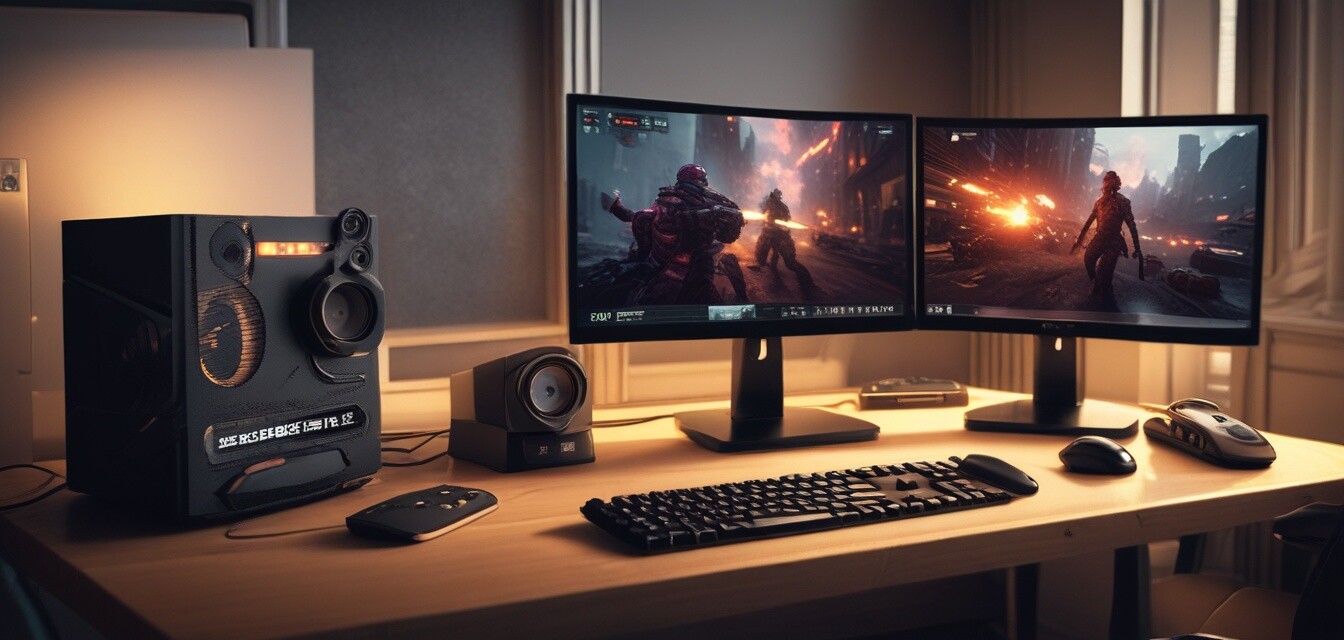
How to Select the Optimal Gaming Desk Configuration
Key Takeaways
- Choose a desk that fits your gaming style and space requirements.
- Pay attention to ergonomics to ensure comfort during long gaming sessions.
- Consider cable management to keep your setup neat and organized.
- Look for additional features like adjustable height or built-in storage.
- Optimizing your gaming desk can enhance both performance and enjoyment.
When it comes to gaming, your desk setup plays a crucial role in your overall comfort and efficiency. It’s not just about the aesthetics; it's about creating an environment that enhances your gaming experience. This guide will walk you through the essential factors to consider when selecting the optimal gaming desk configuration.
Understanding Your Space
Before diving into the selection of your gaming desk, it's important to understand the area where you will be setting it up. Consider the following aspects:
- Room Size: Measure your gaming area to determine how much space you have to work with.
- Layout: Think about how you will position your desk in relation to other furniture.
- Lighting: Ensure that your gaming space has adequate lighting for both gaming and other activities.
Ergonomics Matter
Comfort is key during those long gaming sessions. An ergonomic gaming desk can significantly affect your posture and overall comfort. Here are some important ergonomic features to consider:
| Feature | Description |
|---|---|
| Height Adjustment | Allows you to set the desk to an appropriate height to avoid strain. |
| Desk Shape | Curved desks can help keep everything within reach and enhance comfort. |
| Keyboard Position | A pull-out keyboard tray can help keep your main work surface clear. |
| Footrest | Provides additional comfort and proper posture by allowing you to rest your feet. |
Choosing the Right Desk Type
Next, you’ll want to decide on the type of desk that best suits your needs. Here are a few popular options:
- Traditional Desks: Great for a classic look, offering plenty of surface space.
- Corner Desks: Efficient use of space, maximizing room layout.
- Height Adjustable Desks: Offers flexibility for sitting or standing while gaming.
Material Consideration
The materials used in your desk can affect durability, weight, and stability. Common materials include:
| Material | Pros | Cons |
|---|---|---|
| Wood | Durable and sturdy | Can be heavy and expensive |
| Metal | Lightweight and strong | Can rust if not treated properly |
| Glass | Stylish and modern | Can be fragile and requires regular cleaning |
Cable Management Solutions
One often-overlooked aspect of a gaming desk configuration is cable management. A cluttered environment can lead to distractions and frustrations during gameplay. Here are some solutions:
- Use cable ties to keep cords organized.
- Opt for desks with built-in cable management systems.
- Consider using a cable box to conceal wires.
Storage and Accessories
Having sufficient storage can keep your gaming area tidy. Here are a few storage options:
- Drawers: Great for keeping accessories out of sight.
- Shelves: Ideal for displaying gaming memorabilia or storing games.
- Hooks: Can be used to hang headsets and other gear.
Creating the Gaming Atmosphere
Lastly, don't forget about the aesthetics of your gaming space. Creating an inviting atmosphere can further enhance your gaming experience. Consider:
- Lighting: LED strips, ambient lamps, or gaming-specific lights to set the mood.
- Wall decor: Posters or art related to your favorite games.
- Chair selection: A comfortable gaming chair for added style and comfort.
Conclusion
Selecting the optimal gaming desk configuration can significantly enhance your gaming performance and comfort. By carefully considering your space, ergonomic features, desk types, cable management, storage options, and atmosphere, you can create an ideal environment that caters to your gaming needs. For more in-depth guidance on gaming accessories, make sure to check out our selection in the Gaming Accessories category.
Pros
- Improves overall gaming experience and comfort.
- Reduces environmental clutter with effective cable management.
- Enhances productivity and focus during gaming sessions.
Cons
- Higher initial investment for quality setups.
- May require ongoing adjustments and organization.
